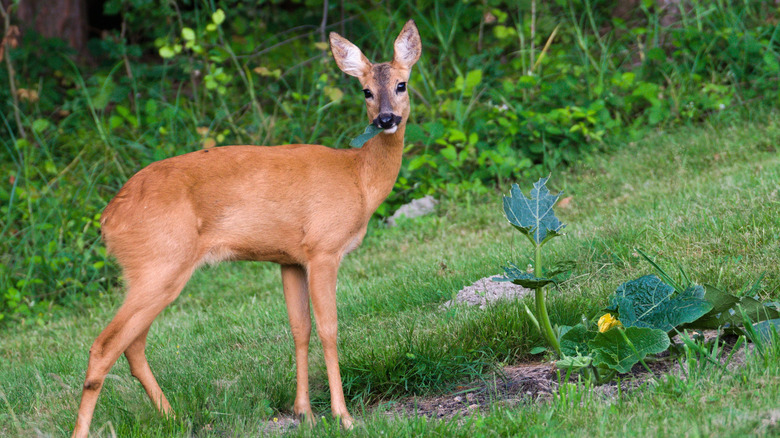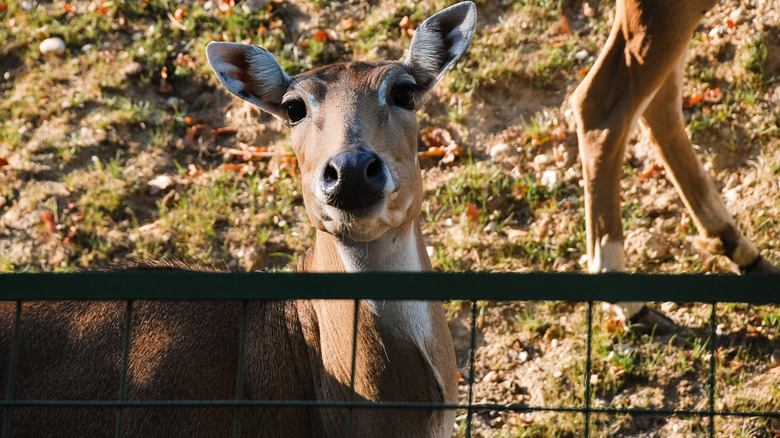How Tall Does A Fence Need To Be To Keep Deer Out?
Dealing with wildlife is a reality every gardener and homeowner must face from time to time. While you might have to implement strategies to deter common offenders such as squirrels and other rodents, there are larger animals to contend with as well. This includes the ever-so cute (but ever-so destructive) deer. These animals typically only go near homes when they've found a source of food, but once they do, they will likely keep coming back until there's nothing left. Building a fence around your yard or garden is one of the most practical and straightforward methods to keep deer out, but the structure must be at least 8 feet tall if you want it to be an effective deterrent against them.
When it comes to deer management, you might have explored numerous animal-safe options, like using natural ingredients that repel deer from the yard or steering clear of some of their preferred plants to avoid attracting them to your garden. Even if you don't have hostas, berries, or other deer favorites around your property, though, these animals may get desperate and try to eat anything. This is truly why exclusionary methods via fencing are the most reliable ways to keep deer out of your yard. Still, choosing an incorrect fence height could negate some of the potential deer-exclusion benefits. Grown deer are able to jump over 7 feet in the air, and as soon as they realize they can safely get over a fence one time, they'll likely continue doing it. Follow a few essential tips for building the perfect fence, and factor in your garden's size, the surrounding terrain, and your local zoning regulations to determine the ideal height.
What to consider when installing a fence to keep deer out
Deer have a reputation for leaping extraordinary heights (some adults can jump over 10 feet high with a running start!), so installing a tall fence is critical to keep them from landing in your property. Experts generally recommend the 8-foot rule for the most assurance against even the most determined deer. Aside from choosing the proper fence height, you'll need to pick a deer-resistant material. Chain link or wire mesh materials are popular choices because of their durability and effectiveness. A smaller yard may still benefit from a traditional wooden fence, though, as long as it's tall enough to offer some form of exclusion.
In some cases, HOA rules or local regulations might restrict the ability to install 8-foot fencing. If you have these types of community rules, a fence that's at least 4 feet tall could be somewhat effective against hungry deer. According to the University of Minnesota Extension, a 4-foot-tall fence can be an effective deterrent if the fenced-in area is small (around 8 feet by 16 feet). Deer don't like being in confined spaces, so they likely won't try to jump even these short fences for fear of becoming trapped.
While exclusion is considered the most effective solution against deer, you may still apply additional deterrents, like planting less desirable plants. Just remember that even if you use plants that keep away deer more generally, they might still eat any plant when facing a food shortage. Natural deer repellents can offer some extra assurance, but these will still not work as effectively as a fence that operates 24/7 through rain, sleet, snow, or shine.

